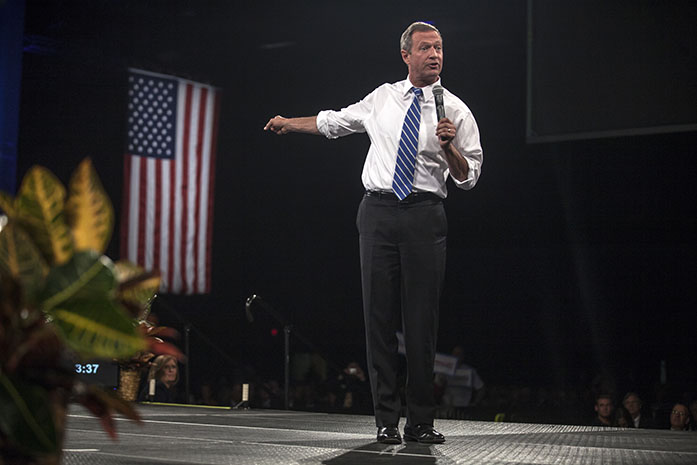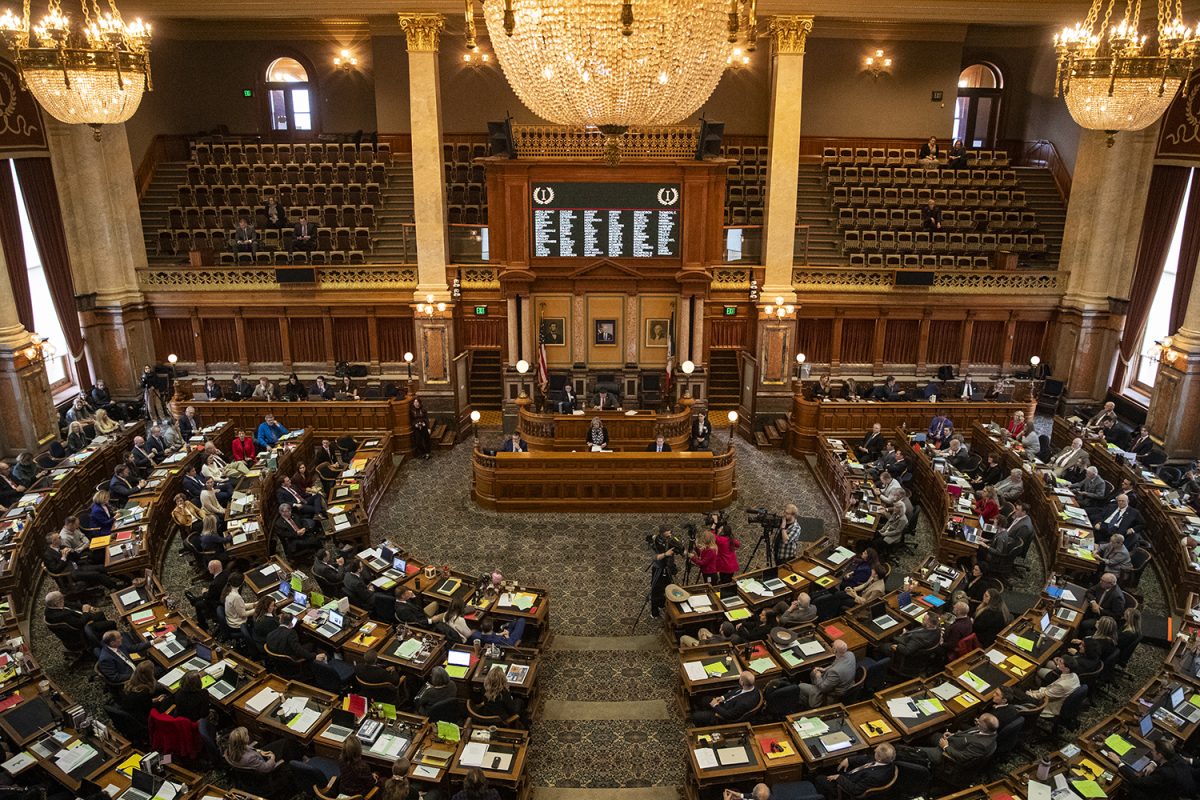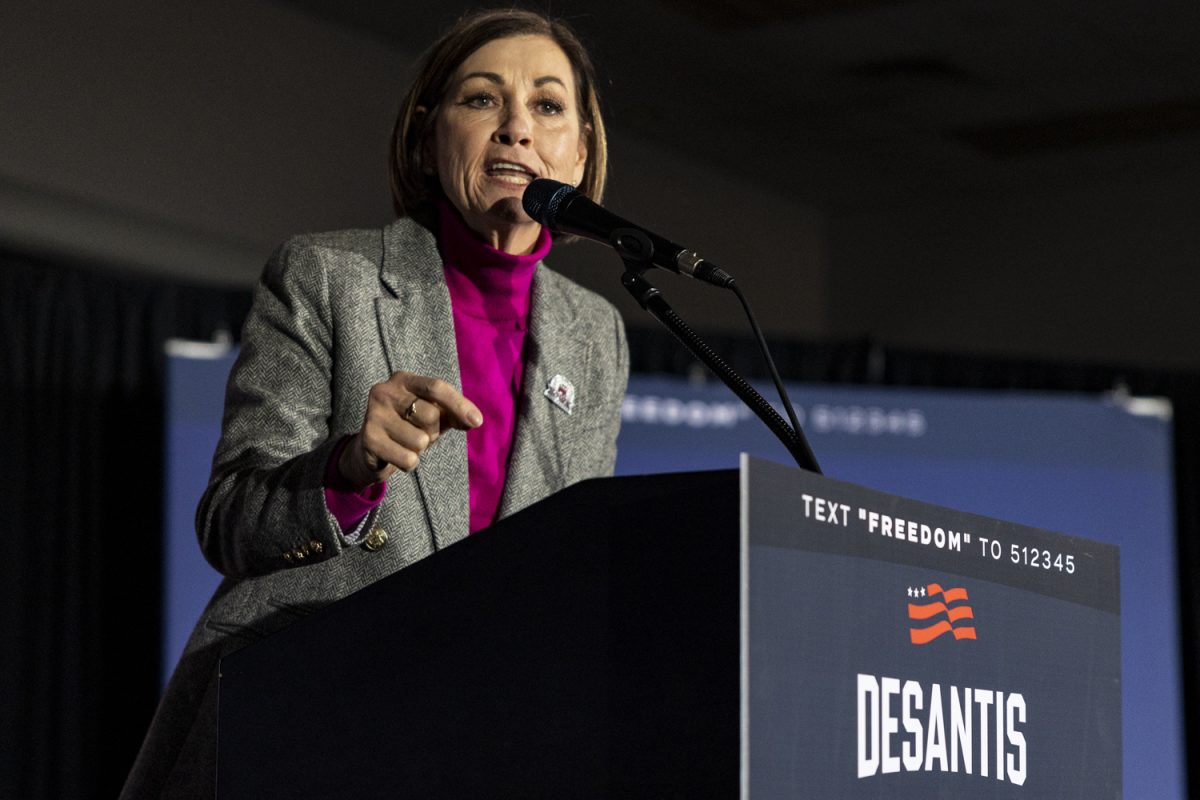Former Maryland Gov. Martin O’Malley will take the debate stage Saturday as the lowest polling candidate in the Democratic race. And some Iowa political analysts see this debate as his chance to cash in on his role as the underdog in order to gain support in the state.
“O’Malley, as an underdog, what does he have to lose?” said Gayle Alberda, a visiting professor of political science at Drake University. She noted that his new position as the lowest of the three Democrats can give him the upper hand in this debate.
The 52-year-old will join current Iowa frontrunner Hillary Clinton and progressive heartthrob Sen. Bernie Sanders at Drake University on Saturday. CBS News will partner with the Des Moines Register and KCCI — the CBS affiliate in Des Moines — to host the nationally televised debate.
Since the last debate, hosted by CNN, the Democratic field has narrowed after the two lowest polling candidates, former Virginia Sen. Jim Webb and former Rhode Island Gov. and Sen. Lincoln Chafee, threw in the towel.
Although O’Malley has struggled to get past single-digit polling numbers in Iowa, Alberda said being put on the same stage as Clinton may solidify the notion that he is a serious candidate.
“You’re being put on stage with someone who is already perceived to be, because she’s polling so well, a valuable candidate for office, and therefore now you’re the equal,” she said.
But for Tim Hagle, a University of Iowa associate professor of political science, the Democratic race isn’t necessarily “up in the air” roughly three months out from the Iowa caucuses, and any possible changes to the current setup may come from Sanders honing in on undecided voters.
“At this point it seems as Hillary is in pretty good shape,” he said. “It’d be hard to see how Sanders is going to beat her in Iowa. But things can still happen; we’re still a ways away [from the Iowa caucuses] so there’s certainly an opportunity for Sanders to try to persuade some Iowa voters that he’s the one who should be their nominee.”
There are fewer than 90 days until the Iowa caucuses, which are currently set for Feb. 1.
Just as much as this debate could help O’Malley gain some traction in the state, Hagle said if the former Maryland governor cannot make any headway at this point, then it would be even more difficult for him later on.
O’Malley drew in a dismal 3 percent support in the latest CNN/ORC Iowa poll released on Nov. 6, compared with Clinton’s 55 percent support, and Sanders 37 percent. However, O’Malley is still up from 1 percent in an August CNN/ORC Iowa poll.
The poll has a margin of error of plus or minus 4.5 percentage points based on a sample of 498 Democrats.
O’Malley addressed the upcoming debate with the Daily Iowan Editorial Board on Nov. 7, calling it a “huge opportunity” to be one of three candidates on a primary debate stage.
“Usually, you don’t see this winnowing of the field until after the first votes are cast,” he said.
O’Malley has spent more time on the ground in Iowa than any other Democratic candidate this cycle. He told the DI he has visited 48 counties across the state thus far, having previously said his goal was to hit all 99.
He called this a vital time for opinion leaders across the state to support candidates by a process of elimination.
“We’re picking up every day in every way here, and I think you’ll see that a little bit in the polls,” he said. “You’ll see it most dramatically on caucus night.”
Bret Nilles, the head of the Linn County Democratic Party, said a drastic change in candidate standings may be less likely to happen in a debate among candidates of the same party.
“You don’t want to hit too hard at your primary opponents or your caucus opponents, because you’re going to want those people to come back and help you later on if you are the nominee,” he said, adding that he expects the candidates to draw contrasts rather than focusing on personal attacks.
Tom Henderson, the head of the Polk County Democrats, said historically, there has been a lot of flux leading up to Iowa caucuses, providing each candidate with an opportunity this weekend to pick up the support of undecided voters.
He said O’Malley is in a unique situation because there will be more time allocated for him to speak and distinguish himself without additional candidates on the stage.










